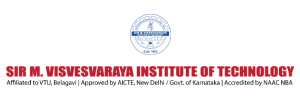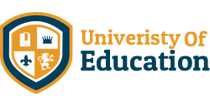Overview Students going abroad for Further Studies –
Rankings of universities are based on various criteria in research and academic education and allow for a comparison of universities on both the national and international level. The university ranking provides a measure of a university’s quality compared to other universities. While the total number of rankings is approximately twenty and growing, Students going abroad usually refer to the Times Higher Education (THE) Rankings and the Quacquarelli Symonds (QS) World University Rankings ARWU
- THE (Times Higher Education)
- QS (Quacquarelli Symonds)
- ARWU (Academic Ranking of World Universities)
THE
The Times Higher Education (THE) World University Ranking that judge teaching, research, knowledge transfer and the international outlook for ranking. it uses 13 carefully calibrated performance indicators to calculate university ranking. THE publishes world ranking each year around September.
The Times Higher and Quacquarelli Symonds rankings split in 2009 over disputes over the validity of results being produced.
Indicators and Weights for THE 2017
Definition of Indicators
| Indicator | Definition |
|---|---|
| Teaching | Reputation survey: This indicator looks at a university’s reputation for academic excellence among its peers, based on the responses to Times Higher Education (THE) annual Academic Reputation Survey. It examines the perceived prestige of institutions in teaching. Staff-to-student ratio: This indicator looks at the number of academic staff per student. Doctorate-to-bachelor’s ratio: This indicator the examines the ratio of doctoral to bachelor’s degrees awarded by each institution. Doctorates-awarded- to-academic-staff ratio: This Indicator examines the data on the number of doctorates awarded by an institution, scaled against its size as measured by the number of academic staff it employs. Institutional income: This indicator calculates Institutional income is scaled against academic staff numbers and normalised for purchasing-power-parity (PPP). It indicates an institution’s general status and gives a broad sense of the infrastructure and facilities available to students and staff. |
| Research | Reputation survey: This indicator looks at a university’s reputation for research excellence among its peers, based on the responses to Times Higher Education (THE) annual Academic Reputation Survey. Research income: This indicator calculates Research income scaled against academic staff numbers and adjusted for purchasing-power-parity (PPP). Research productivity: This indicator calculator the number of papers published in the academic journals indexed by Elsevier’s Scopus database per scholar, scaled for institutional size and normalised for subject. |
| Citations | This indicator examine research influence by capturing the average number of times a university’s published work is cited by scholars globally. The data include the 23,000 academic journals indexed by Elsevier’s Scopus database and all indexed publications between 2012 and 2016. Citations to these publications made in the six years from 2012 to 2017 are also collected for calculation. The data are normalised by the overall number of papers produced, and to reflect variations in citation volume between different subject areas. |
| International outlook | This indicator calculates the proportion of a university’s total research journal publications that have at least one international co-author and reward higher volumes. This indicator is normalised to account for a university’s subject mix and uses the same five-year window as the “Citations: research influence” category. |
| Industry income | This indicator measures how much research income an institution earns from industry (adjusted for PPP), scaled against the number of academic staff it employs. |
QS
A British company specializing in education and study abroad services. Each year Quacquarelli Symonds Ltd. (QS) world ranking is published in June and it uses six indicators of performance to determine university rank.
Indicators and Weights for QS 2017
| Indicator | Weighting |
|---|---|
| The highest weighting of any metric is allotted to an institution’s Academic Reputation score. Based on QS Academic Survey, it collates the expert opinions of over 80,000 individuals in the higher education space regarding teaching and research quality at the world’s universities. | 40% |
| Employer Reputation metric is based on over 40,000 responses to the QS Employer Survey and asks employers to identify those institutions from which they source the most competent, innovative, effective graduates. | 10% |
| QS uses teacher/student ratios as the most effective proxy metric for teaching quality. It assesses the extent to which institutions are able to provide students with meaningful access to lecturers and tutors, and recognizes that a high number of faculty members per student will reduce the teaching burden on each individual academic. | 20% |
| Citations per faculty – QS use a five-year publication window for papers for this indicator. QS then take a look at a six-year citation window; reflecting the fact that it takes time for research to be effectively disseminated. To account for the fact that different fields have very different publishing cultures, QS normalize citations based on the area of research.All citations data is sourced using Elsevier’s Scopus database, the world’s largest repository of academic journal data. This year, QS assessed 66 million citations from 13 million papers once self-citations were excluded. | 20% |
| International faculty ratio demonstrates an ability to attract faculty from across the world, which in turn suggests that it possesses a strong international brand. It implies a highly global outlook: essentially for institutions operating in an internationalised higher education sector. | 5% |
| International student ratio demonstrates an ability to attract students from across the world, which in turn suggests that it possesses a strong international brand. It implies a highly global outlook: essentially for institutions opera | 5% |
ARWU
The Shanghai Jiao Tong ranking was the first of the global university rankings, launched in 2003 as part of China’s Project 985 to modernise their higher education system.
Project with the specific intention of creating elite universities as a measure of a world class system. The findings of the project led to the creation of the C9 League of elite Chinese universities as a challenge to the elite US institutions. The Shanghai Jiao Tong ranking should be understood in these terms; it was never designed to be a comprehensive management tool to represent the totality of universities, or universities further down the rankings. It is the most ‘elite’ of all the university rankings; it is specifically geared towards grading universities against Anglo-American institutions.
The Shanghai ranking consultancy publishes ARWU ranking every year in August. the ranking uses six different indicators collected independently from various sources. For each indicator, the highest scoring institution is assigned a score of 100, and other institutions are calculated as a percentage of the top score. Scores for each indicator are weighted as shown below to arrive at a final overall score for an institution.
Indicators and Weights for ARWU 2017
| Criteria | Indicator | Code | Weight |
|---|---|---|---|
| Quality of Education |
The total number of the alumni of an institution winning Nobel Prizes and Fields Medals. Alumni are defined as those who obtain bachelor’s, master’s or doctoral degrees from the institution. Different weights are set according to the periods of obtaining degrees. The weight is 100% for alumni obtaining degrees in 2001-2010, 90% for alumni obtaining degrees in 1991-2000, 80% for alumni obtaining degrees in 1981-1990, and so on, and finally 10% for alumni obtaining degrees in 1911-1920. If a person obtains more than one degrees from an institution, the institution is considered once only. | Alumni | 10% |
| Quality of Faculty |
The total number of the staff of an institution winning Nobel Prizes in Physics, Chemistry, Medicine and Economics and Fields Medal in Mathematics. Staff is defined as those who work at an institution at the time of winning the prize. Different weights are set according to the periods of winning the prizes. The weight is 100% for winners after 2011, 90% for winners in 2001-2010, 80% for winners in 1991-2000, 70% for winners in 1981-1990, and so on, and finally 10% for winners in 1921-1930. If a winner is affiliated with more than one institution, each institution is assigned the reciprocal of the number of institutions. For Nobel prizes, if a prize is shared by more than one person, weights are set for winners according to their proportion of the prize. | Award | 20% |
| Research Output |
Highly cited researchers in 21 broad subject categories. The number of Highly Cited Researchers selected by Clarivate Analytics. The Highly Cited Researchers list issued in 2017 (2017 HCR List as of December 15, 2017) was used for the calculation of HiCi indicator in ARWU 2018. Only the primary affiliations of Highly Cited Researchers are considered. | HiCi | 20% |
| The number of papers published in Nature and Science between 2013 and 2017. To distinguish the order of author affiliation, a weight of 100% is assigned for corresponding author affiliation, 50% for first author affiliation (second author affiliation if the first author affiliation is the same as corresponding author affiliation), 25% for the next author affiliation, and 10% for other author affiliations. When there are more than one corresponding author addresses, we consider the first corresponding author address as the corresponding author address and consider other corresponding author addresses as first author address, second author address etc. following the order of the author addresses. Only publications of ‘Article’ type is considered. | N&S | 20% | |
| Per Capita Performance |
Total number of papers indexed in Science Citation Index-Expanded and Social Science Citation Index in 2017. Only publications of ‘Article’ type is considered. When calculating the total number of papers of an institution, a special weight of two was introduced for papers indexed in Social Science Citation Index. | PUB | 20% |
| The weighted scores of the above five indicators divided by the number of full-time equivalent academic staff. If the number of academic staff for institutions of a country cannot be obtained, the weighted scores of the above five indicators is used. | PCP | 10% |


